Boost learning with a simulated hands-on experience for your medical equipment
Can hands-on training with medical equipment be improved?
With medical technologies and standards of care constantly changing, healthcare professionals must commit to lifelong learning to stay current. Well-trained staff can provide high-quality care more efficiently, saving money for a clinical institution. But ineffective training is a costly affair, and the total loss to a business can be staggering: $13.5 m per year, per 1,000 employees.1
What makes training effective? One could argue that effective training is always relevant to the role of the learner and fits into a busy schedule without disrupting daily business. Around the world, traditional learning methods are still widely used, but over the past years, learning has also become increasingly digital – opening new opportunities.
Simulation-based training is one form of digital training. It allows creating a simulated version of a device or environment, so users can train safely and repeat the training as often as required. Especially in the healthcare environment, this is a good way to train and educate – because it’s safe for both users and patients, and no medical equipment is being blocked from medical use.
Within the scope of our hybrid learning philosophy, we at Siemens Healthineers are offering simulation-based training with our SmartSimulator solution. It is aimed to help radiology students and professional technologists to get practical hands-on training with medical devices from Siemens Healthineers.
Challenges regarding further training of technologists
- Need to enhance hands-on experience and workforce efficiency after installation of new medical equipment
- Need to reduce time-consuming onboarding of new colleagues and enabling them to leverage their full potential right from the start
- Need to avoid lower patient throughput and reimbursements, as well as higher costs resulting from lack of equipment and staff availability during training
- Need to provide continuous training in order to ensure consistent image quality
Challenges regarding education of radiology students
- Need to meet changing student expectations regarding modern, exciting, more digital classroom education
- Need to be able to offer all students a placement for hands-on training in a busy radiology department
- Need to offer all students the best possible start into their professional life
Why simulation-based learning can boost learning successes

What really sticks with most learners is not what they just read, heard, or saw – but what they experienced firsthand. It’s the combination of as many senses as possible that makes something more memorable. The Learning Pyramid, or cone of learning, by Edgar Dale reflects that. In his book Audio-Visual Methods in Teaching published in 1946, he identified seven learning methods, divided them into passive and active modes, and specified their effectiveness in terms of knowledge retention.
Simulation-based learning involves many of our senses. But what does simulation mean? According to the Merriam Webster Dictionary, a simulation is the act or process of simulating, i.e. the imitative representation of the functioning of one system or process by means of the functioning of another.3 And in that lies one of the main benefits of simulation-based learning: Learners can use various senses – from reading, seeing, and hearing to doing things with their hands – to build knowledge and skills and gain experience in a safe and controlled environment.4

Simulation-based learning trends in healthcare training
Simulation-based training has evolved over the years and firmly established itself as a critical pillar in medical education.9 One of the reasons is that it helps users gain experience in a safe environment without putting patients in danger or blocking medical systems for clinical use.
There are some trends that underline the value of simulation-based training.
Hybrid learning
For both healthcare education institutions and clinical institutions, offering a mix of instructional models that appeals to a wider range of learners is a key component in boosting their reputation and growing institutional enrolment.9 A hybrid learning concept introduces a high level of flexibility by mixing onsite, online, and digital learning to cater to different learning styles.
Decreasing number of healthcare workers
The World Health Organization (WHO) estimates a projected shortfall of 10 million health workers by 2030.10 Despite this anticipated shortfall, healthcare training facilities have had to turn away tens of thousands of qualified applicants due to inadequate resources, including training facilities and qualified faculty.9 Simulation-based training can help do more with less: On the one hand, it allows educators to increase the number of learners per training. And on the other hand, clinical institutions can reduce the number of hours they need to block a clinical system in order to give students hands-on clinical experience.
Continuous education
Clinical institutions have to ensure continuous education and training for their medical staff. In the radiology department, for example, technologists have to stay up to date with new technologies and protocols to ensure safe patient care. Simulation-based training allows busy technologists to efficiently learn how to operate a new system as well as onboard new colleagues. In addition, interprofessional education (IPE) paired with simulation is an excellent approach to cross-train departments and staff from separate locations.9
Telehealth simulation
With simulation-based training, the trainer and the learner do not have to be physically present in the same room. The training can also happen online as telehealth training. This helps clinical institutions to modernize their training programs by merging virtual, online, live, and mobile training.9 Furthermore, it also helps save valuable time as well as costs because employees can easily participate without having to travel at all.

Gaining hands-on experience with the SmartSimulator
Technologists need a lot of hands-on experience to be able to scan patients safely and deliver high-quality images. As a radiology department must be efficient and up and running 24/7, it is difficult to find time for in-depth hands-on training.
Innovative learning method
SmartSimulator is our innovative learning opportunity which is part of our hybrid learning strategy. As we know, people learn best when their entire brain and all senses are activated – when they can read, listen, observe, and do things themselves. This makes training and learning more efficient, effective, and fun. Furthermore, a simulation environment is a safe environment for learning. It also allows us to create new spaces and opportunities for the users. And it is available 24/7.
SmartSimulator allows technologists, whether student or professional, to train and practice on a simulated version of a medical device from Siemens Healthineers. Clinical institutions and schools can use demo data as also upload their own DICOM data and scan protocol files for training purposes.
Learning in a safe environment
During the hands-on training, users can try out all system features in a safe simulated environment via their computer. They can change system settings and see what happens without endangering patients – thus safely enhancing their confidence and improving scanning efficiency. And they can train and repeat as long and often as they want without blocking a medical system, which helps increase utilization of medical equipment.
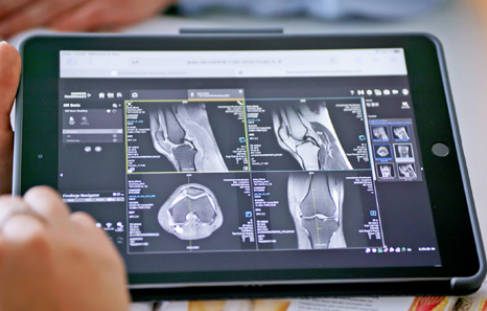
SmartSimulator can be used for several training purposes within your organization or at home
SmartSimulator supports various expert-guided education methods, from classroom training or onsite workshops to virtual formats, and allows direct interaction with trainers and peers. |
SmartSimulator as subscription also allows individual education and practice for an interactive learning experience, in a safe environment, anytime, anywhere, on a personal computer. |
A cloud-based learning experience
SmartSimulator is a cloud-based solution using a digital twin of a Siemens Healthineers system. It can be used as part of classroom trainings or clinical workshops that take place either onsite or online via personal computer. Participants can directly interact with both their trainer and peers – whether they sit in the same room or not.
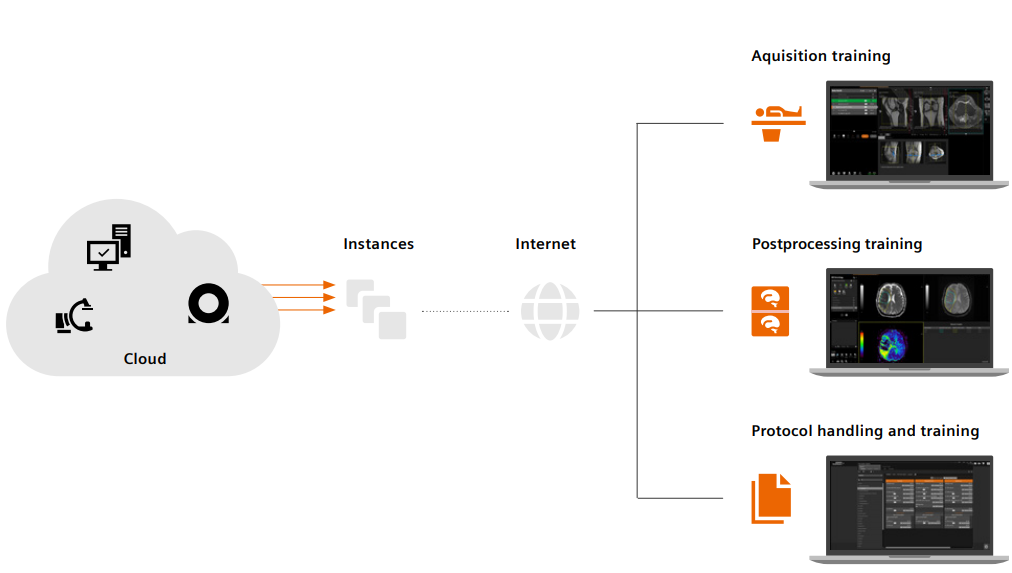
Benefits at a glance
SmartSimulator helps radiologists to:

SmartSimulator: Use cases
Health University of Applied Sciences Tyrol, Austria
The Health University of Applied Sciences Tyrol is using SmartSimulator to train their students on CT and MRI systems. All students reacted very positively to SmartSimulator. They appreciate that the user interface looks exactly like the real device – and that everything takes the same amount of time as in the field.
The students are using SmartSimulator in guided classes as well as independently on their own. Heide-Maria Preuer observed that her students gain more confidence because they get more practice with SmartSimulator. As a result, real-life practice at the hospital has become easier for the students, too.
For the future, the Health University of Applied Sciences Tyrol plans to let students use SmartSimulator in research projects for their bachelor or master theses. They also plan to use it for advanced training courses for already finished radiological technologists.
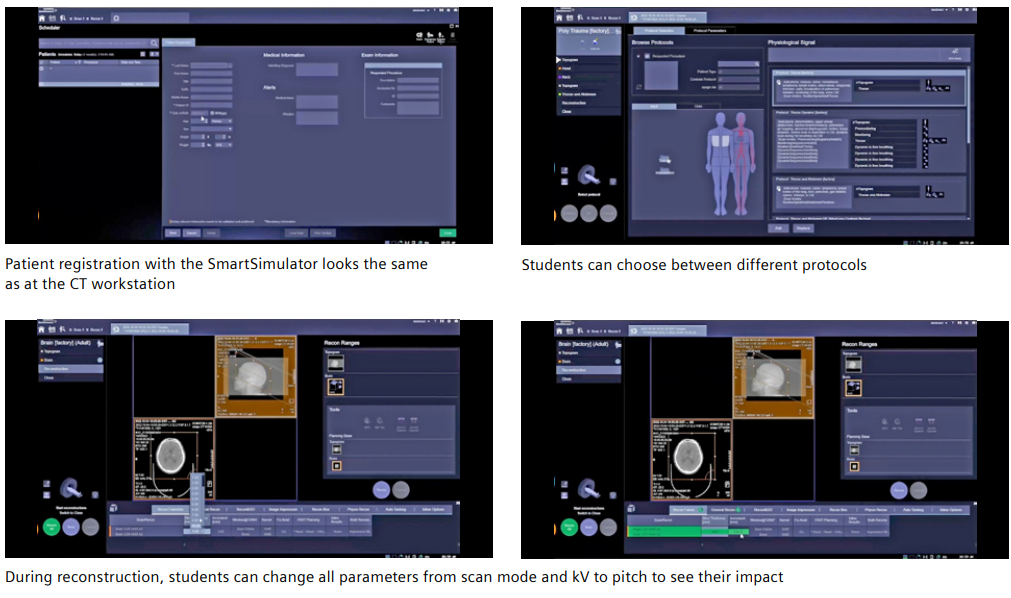
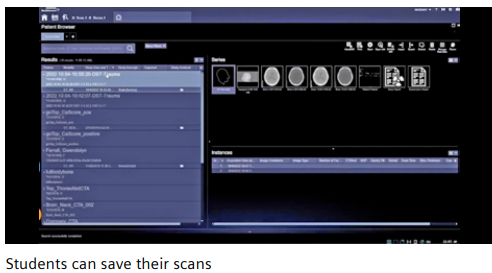
You can do as many recons as you want, which is very important for the students. You can tell the students just train, do recons, change things, have a look at them afterwards. There’s no possibility that they can do anything wrong or send anything to a PACS system.
Heide-Maria Preuer, Lecturer & Research,
Health University of Applied Sciences Tyrol, Austria
University of South Australia, Australia
Elio Arruzza is a lecturer at the University of South Australia. He is using SmartSimulator for his students in class. To further optimize their learning experience, Elio Arruzza conducted a survey with his students about SmartSimulator. Here are his findings:
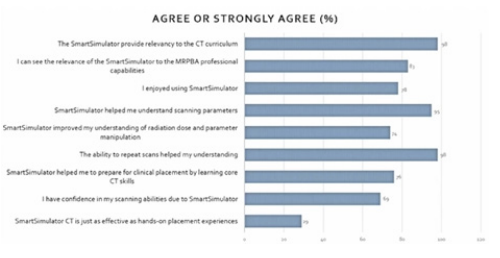 | f |  |
Finding 1: Satisfaction and relevance All in all, the students at the University of South Australia see SmartSimulator as a very helpful tool that enhances knowledge, understanding, and confidence. They see it as an additional tool for their studies, but not as a replacement for hands-on experience at the hospital. | Finding 3: Familiarity The students who worked with SmartSimulator prior to their clinical practice valued the fact that they were already familiar with the interface and handling. Thus, they had one thing less to worry about. However, they also admit that the atmosphere in a CT department is different to using a laptop or computer in a classroom. | |
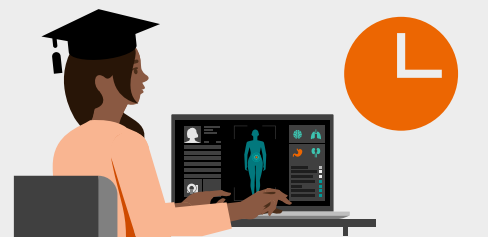 jjjjjjjjjjjjjjjjjjjjjjjjjjjjjjjjjjjjjjjjjjjjjjjjjjjjjjjjjjjj jjjjjjjjjjjjjjjjjjjjjjjjjjjjjjjjjjjjjjjjjjjjjjjjjjjjjjjjjjjj |  | |
Finding 2: Time The students value the fact that with SmartSimulator they can take their time to understand CT concepts. While they are usually under time pressure to scan as quickly as possible when on placement, they can take their time and practice the theory with SmartSimulator. They can try and figure out what to change when things went wrong. | Finding 4: Relevance For students, it is important that what they are taught in the classroom is going to be of benefit to them on their clinical placement as well as in their real job after graduation. The students were highly satisfied with SmartSimulator. The method by which it is taught, however, is also extremely important because students expect clinical applicability. This means that case-based scenarios are favored over non-clinically based instructional teaching methods. |
Summary
In the busy and often hectic world of radiology departments, it might be difficult to take the time needed for training. In their article “Simulation-based education for medical radiation students”, Elio Arruzza et al concluded that if implemented appropriately, simulation can provide students with opportunities to experience the clinical environment in a safe context and learn at their own pace.11 Simulation-based training also makes onboarding new colleagues or offering further training for existing staff more efficient. Being a digital twin of medical systems from Siemens Healthineers, SmartSimulator supports just that: training on a personal computer or laptop, anytime, anywhere, in a simulated environment that looks and reacts like the real thing – without blocking the daily clinical routine or having to worry about patient safety
 Success Stories
Success Stories
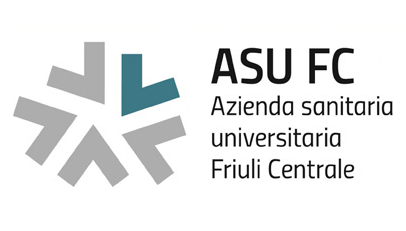 |
To improve training efficiency, 10 technologists completed remote training on how to operate a newly installed CT scanner using virtual acquisition workstations in a Virtual Classroom setting.
|
“All the team was able to attend and join remotely. Thanks to the SmartSimulator we could learn the user interface, the acquisition parameters and simulate the operativity of the scanner CT SOMATOM go.Top without any pressure. Despite the lack of previous knowledge about Siemens Healthineers technologies, we’ve been able to scan routine examination before on site training could commence. Thanks to the
|
 |  | |
Technicians with a very busy schedule and changingwork locations were difficult to reach and bring together to one space to introduce them to product fundamentals.
| For a remote hand-over training, scan protocols were created in advance using SmartSimulator to enable focused training on routine workflows during the onsite visit.
| |
“Through this remote training approach, more participants were able to attend the training. This proved to be highly efficient. We could solve problems at hand quickly. Training time was flexible, which was very important to us.”
Deng Jia,
The results by customers of Siemens Healthineers described herein are based on results that were achieved in the customer’s unique setting. Since there is no “typical” hospital and many variables exist (e.g. hospital size, case mix, level of IT adoption) there can be no guarantee that other customers will achieve the same results. | “The pre-education was very helpful and having that resource is awesome. This combined with their onsite training make the transition very smooth!”
Terry Meierkort, |
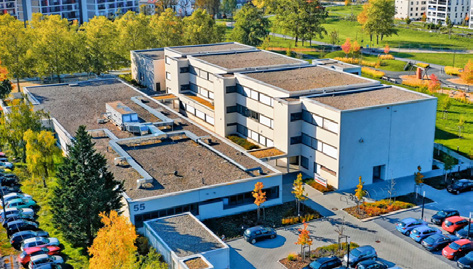 |  | |
Using simulation-based learning in the classroom helps students to better build their skills and knowledge.
| Before system installation, the radiology team already performed online SmartSimulator training courses to get to know the new hardware and software.
| |
“By using the SmartSimulator, we have learned how the device works with the settings, how to move the CT table, and how to operate the scan. You can try out the buttons without exposing the patient to radiation, without putting the patient in danger. What we learned stays with us much better.”
Kim Mathias, | “While the system was being introduced in our department, we received highly focused onsite training, having completed both a self-learning module via PEPconnect and SmartSimulator administered by experienced trainers. This stepwise approach helped us to seamlessly transition from an old system from a different vendor and efficiently introduce a completely new software package.”
|
 | 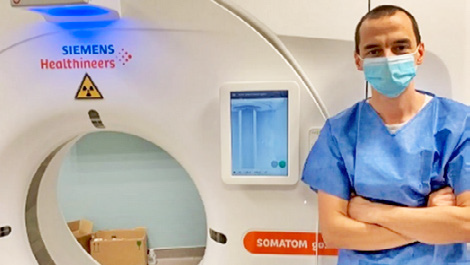 | |
The MOBILETT Elara handover training had to be performed fully virtually using PEPconnect assigned training modules and remote sessions with SmartSimulator as follow up.
| Protocols based on the SOMATOM Edge were implemented for the SOMATOM go.All and were remotely customized by a senior Clinical Education Specialist using the SmartSimulator.
| |
“We have a couple of installations in that remote area, but we have to fly there. If we want to reduce the costs for the customer, I think it is a great alternative if we can offer virtual education options, especially in these cases in which the customer has prior experience with FLC software-based systems.”
The results by customers of Siemens Healthineers described herein are based on results that were achieved in the customer’s unique setting. Since there is no “typical” hospital and many variables exist (e.g. hospital size, case mix, level of IT adoption) there can be no guarantee that other customers will achieve the same results. | “The installation of the go.All has been optimal. From the first day we were able to perform all the urgent examinations of the clinic (≈15) and from the second day all external and hospital patients (≈30). Before we started, the application engineer prepared around forty protocols adapted to our needs. This process allowed us to become familiar with the platform, which we did not know, very quickly and very smoothly. We quickly moved to the phase of optimizing protocols and improving image quality with the radiologists. In one week, 10 technologists were confident in using this new modality.”
Nicolas Couëpel, |
References
- www.shiftelearning.com/blog/statistics-on-corporate-training-and-what-theymean-for-your-companys-future; last accessed April 19, 2023
- https://www.researchgate.net/figure/Edgar-Dale-Audio-Visual-Methods-inTeaching-3rd-Edition-Holt-Rinehart-and-Winston_fig1_283011989; last accessed April 19, 2023
- https://www.merriam-webster.com/dictionary/simulation; last accessed April 19, 2023
- https://advancesinsimulation.biomedcentral.com/articles/10.1186/s41077-022- 00206-3; last accessed April 19, 2023
- https://www.ncbi.nlm.nih.gov/pmc/articles/PMC4037306/#b3-mder-7-139; last accessed April 19, 2023
- https://www.shiftelearning.com/blog/bid/247473/18-Mind-Blowing-eLearningStatistics-You-Need-To-Know139; last accessed April 19, 2023
- https://www.ncsbn.org/public-files/simulationguidelines_alexander_2015.pdf; last accessed April 19, 2023
- According to the study “How Personalized Learning Can Benefit Students” cited by https://www.dreambox.com/resources/blogs/personalized-learning-benefit-students; last accessed April 19, 2023
- https://www.who.int/health-topics/health-workforce#tab=tab_1; last accessed April 19, 2023
- https://www.simulationiq.com/blog/content/6-trends-in-simulation-basedlearningin-medical-education/; last accessed April 19, 2023
- https://www.researchgate.net/publication/358696046_Simulation-based_ education_for_medical_radiation_students_A_scoping_review

























